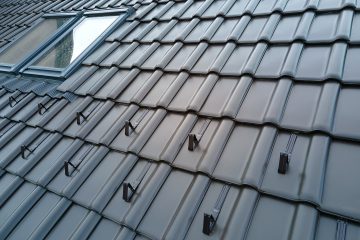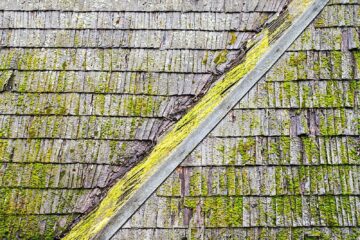Quality flashing forms the cornerstone of any roof. Flashing seals essential parts of your roof that may be prone to leaking or incur water damage. Protecting you from the elements, roof flashing keeps the inside of your home safe while simultaneously securing the integrity of your roof.
Polaris Roofing Systems has been improving the homes of Flagstaff, AZ, for years, providing cutting-edge roof flashing and helping families lengthen their roof’s lifespan.
Contact us to learn more about how flashing can fortify different parts of your roof. Call Polaris Roofing Systems today at (928) 699-4840 to schedule an appointment for a free estimate.
What Is Roof Flashing?

Flashing consists of metal, plastic, or a composite material covering placed around critical areas of your roof that can leak. Often, this area contains objects like a chimney that come into contact with the roof itself. As these components meet the roof, they can cause gaps in the roof, affecting its protection and integrity.
These intersections will vary in size due to expansions and contractions related to temperature. Flashing can account for these size changes while also keeping your roof sealed and protected regardless of the season.
Areas of the Roof That Need Flashing
Water can get beneath your shingles and cause severe damage if you don’t have roof flashing. Especially where two different materials or elevations meet, water has plenty of room to seep beneath the surface of your roof. You need flashing in places where your roof intersects with a wall, such as:
- Front walls and sidewalls: Areas where your roof and a wall intersect
- Skylights, vent pipes, and dormers: Includes these and other protrusions or objects connected to the roof
- Chimneys: Particularly the edges around the base of the chimney where flashing lies between the shingles and the vent. This area often requires base flashing and counter flashing.
- Valleys: Dips in the roof where slopes intersect
- Eaves and rakes: The edge sections of the roof

Every home has some if not all these features. You should seal these fixtures quickly to prevent any damage from occurring. We use different flashing styles depending on the surface needing treatment.
In Flagstaff, AZ, the weather can be rough, and you’ll need top-of-the-line flashing to ensure your roof lasts.
Common Types of Roof Flashing
- Vent pipe flashing: A cone-shaped piece installed within the shingles to protect pipes
- Drip edges: Fitted under the roofing felt along the roof’s outermost edges, allowing water to run off the roof
- Continuous flashing: Or “apron flashing” consists of a long piece of flashing covering the space where a wall and roof join
- Step flashing: A right-angle-shaped piece used to protect the joining of a roof and wall
If you need a type of flashing that we didn’t mention, call a reputable roofing contractor to inquire about their complete selection. Most offer many types and styles for all roofs.
Materials Used for Roof Flashing
Roof flashing presents you with several options. Naturally, this allows you to use flashing that pairs well with your home’s overall aesthetic. Some customers even choose something that contrasts with the shingles on their home.
Regardless, these materials all have something to offer, so you must know a little about them before you put flashing on your roof. Some of the common materials include:
- Copper: Copper proves a popular pick as it’s aesthetically pleasing on most roof materials and highly durable (it’s coincidentally easy to install as well). It turns to a green patina over the years, which can be positive or negative. Copper flashing lasts without treatments over time.
- Aluminum: Aluminum offers a light and easy-to-install alternative—about as easy to apply as copper. This cheaper option still lasts and comes malleable enough to handle odd sections on your roof. However, aluminum needs a protective finish, unlike copper, or it will degrade.
- Steel: Steel represents another eye-catching choice, though it also needs galvanization to prevent corrosion. If treated properly, this material becomes one of the longest-lasting flashing types. Steel also pairs well with metal roofing and sheet metal shingles.
Contact a professional roofing contractor if you have any questions about which flashing type would work best for your home.
Don’t wait if your home appears vulnerable to water damage. Call (928) 699-4840 today to schedule a free estimate and learn more about how Polaris Roofing Systems can help you protect your home.


